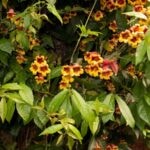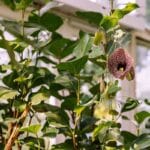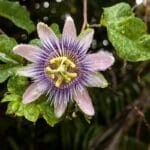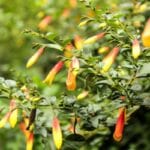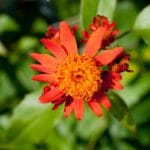Flowering vines rule most landscapes and vertical gardens. One of the famous vines is the Rangoon creeper. It is utilized for its vast growth habit, colorful and appealing flowers, broad leaves, and fragrance.
It is covered in enormous trusses of tri-colored blooms that are exceedingly spectacular and sweetly perfumed when in full bloom and could make a wonderful impact on your landscape. Read more to know if this tropical vine is perfect for one’s landscape theme.
Botanical Information
The Rangoon creeper also goes by the names drunken sailor, red jasmine, quisqualis, and Chinese honeysuckle, is a blooming vine native to tropical Asia that grows on trees and along riverbanks. Also, this vine goes by Quisqualis indica or Combretum indicum in the scientific world. This vine came from the Indian almond family or Combretaceae.
A fun fact about this vine’s genus, Quisqualis, is that it means “What is it?”. It is believed to be named that because some botanists thought it was a shrub during earlier times.
Spatial Distribution
The name Chinese honeysuckle gives a clue to where this vine originated, which are countries in Southeast Asia. Although, some studies are saying that it is also native to northern Australia. Given its natural habitat, this vine thrives in USDA zones 10 to 12.
Growth Habits
The Rangoon creeper is an aggressive climber. At maturity, it usually reaches 8 to 10 meters in height and 5 to 8 meters in width. Its vertical reach is only limited by the supporting structures where this vine can cling. It is cultivated in different parts of the world as an ornamental plant.
As one of many fast growing perennial vines, it can last for 10 to 20 years in a garden. For those years, it provides a medium-sized canopy and a coarse texture for the site’s aesthetic. These features are brought by its plant parts.
Leaves
The Rangoon creeper bears green waxy leaves that are arranged alternately on its stem. Each ovate leaf has an entire margin and a 5 to 10 cm leaf blade. Also, it sheds its leaves annually, which adds maintenance activity for a landscape.
Flowers
When Spring and Winter come, the rangoon creeper vine’s flowers take the spotlight. Along with its fruity and sweet scent, the flowers show all its colors varying from white, red, and pink. Moreover, its blooms are arranged in masses with its long tubular green hypanthium connected to a peduncle. Each floret has 4 to 5 triangular petals and green sepals.
Fruit and Seeds
After the bisexual flowers reach maturity and got pollinated, fruits emerge. Small brown oval capsules arise and are often 3 cm in length.
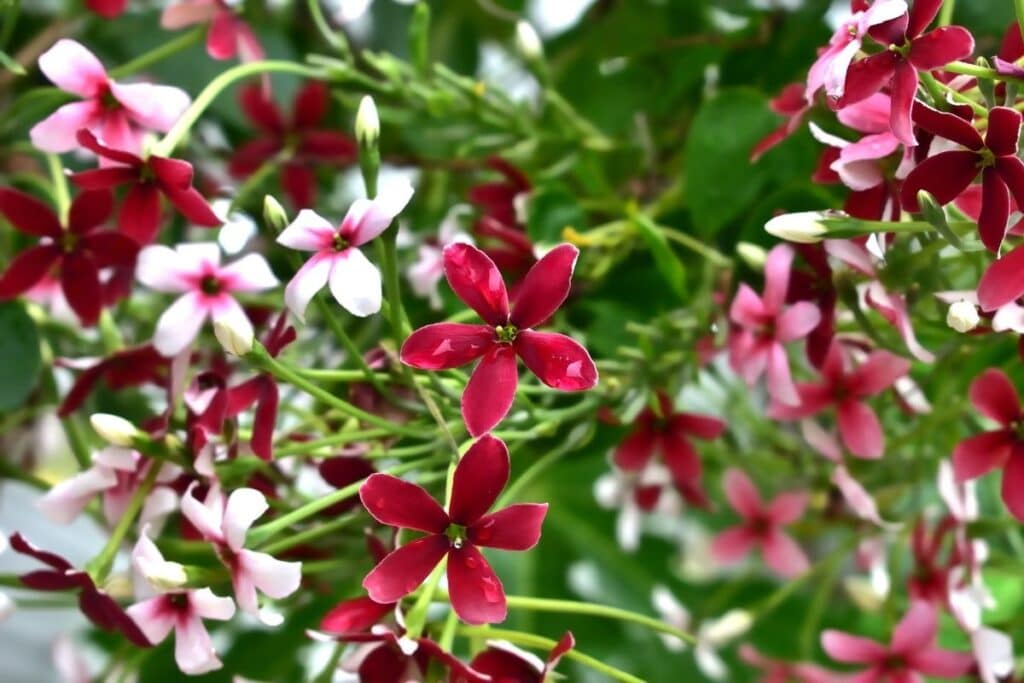
Plant Rangoon Creeper Tips
Sun Requirement
The rangoon creeper vine is a tropical plant, which makes it love to be exposed under full sun. Although, it also thrives in areas under partial shade. Also, make sure that this plant gets six uninterrupted hours of sun exposure to help bear more blooms.
Water Requirement
As a versatile vine, it only needs moderate amounts of water. However, the frequency of watering is altered when the climate changes. For example, watering more frequently is advised during hot summer days. On the other hand, less frequent watering should be done during cold winters.
Temperature and Humidity
The Rangoon creeper tolerates high temperatures. They are root hardy but might freeze back in the winter.
Soil Requirement
In terms of the planting medium, the vine flourishes with well-drained sand, clay, or loam soils. Also, the soil pH must range from acidic to neutral. It is intolerant to soil salts, which is why the application of fertilizers must be thought out.
In terms of the planting distance, it is imperative to let this vine have room for growth. A 4 to 5 feet gap from other plants is the minimum planting distance.
Fertilizer Requirement
As long as the soil is rich in organic matter, the application of fertilizer is not needed. Also, avoid putting nitrogen-rich fertilizers during the plant’s flowering stage. Nitrogen fertilizers will promote more foliage production rather than flower formation.
A bi-annual application of complete fertilizer may be done. Remember to follow the right amount of fertilizer, as indicated in the packaging, to avoid nutrient toxicity and salt build-up.
Maintenance Activities
As a deciduous plant, the Rangoon creeper sheds its leaves annually. During its shedding period, cleaning the fallen leaves around the area is one of the necessary maintenance activities.
This activity is vital because it will prevent debris build-up on the soil and make the plant less susceptible to soil-borne diseases and other pathogens. Another activity that helps in the prevention of pests and diseases is pruning.
Since the rangoon creeper plant is a fast grower, pruning should be done whenever necessary. Removal of dead plant parts and rejuvenative pruning extend the plant’s life and replenish its vigor and appearance.
Propagation
There are two ways to propagate the Rangoon vine, by seed or stem cuttings. For both planting materials, it is a must to have a seedbed or plant pots with well-drained and loose soil placed in a warm area.
Application of rooting hormones, such as auxin, will help the planting materials form roots faster. Also, misting is the best way to water because it will provide a uniform amount for all the seedlings and cuttings.
Avoid exposure to full sun while the plant is still developing its root system. However, they may be transplanted to areas under the full sun once the seedlings are sturdy enough. These young vines are in the perfect stage to train.
Training is often done by providing a supporting structure, like a trellis or a stake, and letting the vine latch on to it. Also, stems that run wild and against the desired form are cut.
Function In The Landscape
The Rangoon creeper may serve as a privacy screen, green wall, shade, and specimen plant in a garden. Its broad and dense leaves make it a good screen and shade, which is done by letting the vine crawl all over fences, arbors, trellises, and pergolas. It is a beautiful overhead shade during its bloom season.
Also, its rough texture is a beautiful addition to a green wall and could be grown among soft-textured plants with smaller leaves. It is a pleasing backdrop with only its foliage but even more so when its flowers start to show.
Lastly, planting it as a specimen plant is also practiced in some gardens. Its fragrance and appearance make heads turn. To serve this function, some gardeners cultivate them in containers. Also, they provide a guiding structure for the vine. In doing so, it has to be pruned more frequently.
Potential Harm
Although this vine is not reported to be invasive, it still has the potential to be an aggressive weed in a landscape. Its fast growth allows it to easily take over an area and destroy other existing vegetation. This potential threat is why it is important to keep this plant pruned regularly and planted with ample space.
FAQs
How fast do Rangoon creepers grow?
In one growing season, the vine can expand to 2 to 5 feet.
Is the Rangoon creeper edible?
The flowers are said to be edible with a bit of a tangy taste. However, the seeds are not edible and may cause digestive problems, vomiting, nausea, and unconsciousness.
What do Rangoon creepers smell like?
They have a sweet fruity scent that may be too strong for people with sensitive noses.
*image by nu_photo/depositphotos

